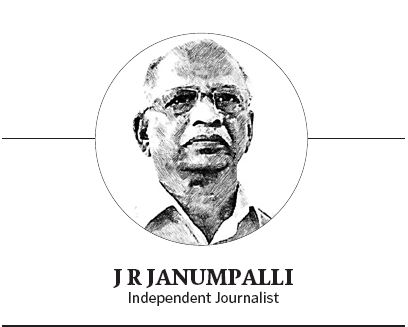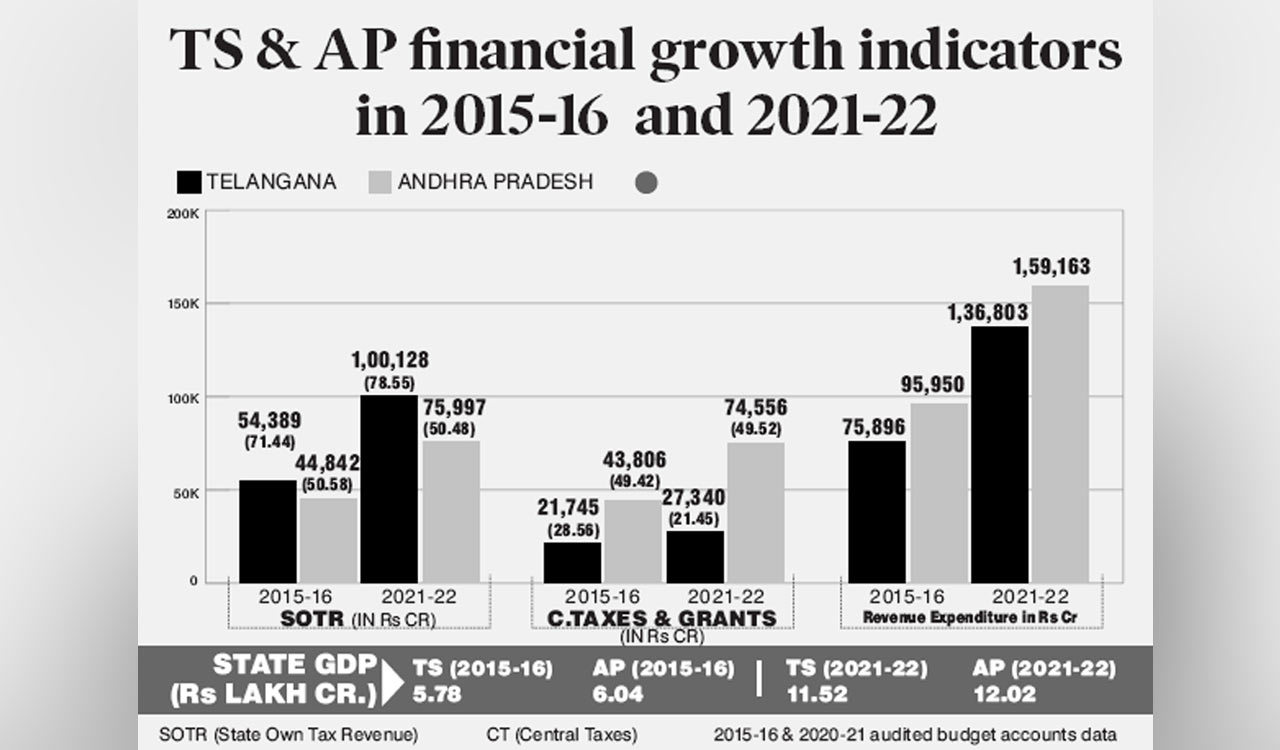The TRS government has undertaken a premeditated, strategic reconstruction plan without much help from the Centre, making use of its own resources
Published Date – 11:30 PM, Fri – 27 October 23

By J R Janumpalli
The scepticism of anti-Telangana state elements regarding the viability of the new State before its formation created curiosity about the progress of the Telangana State.
Naysayers predicted a difficult journey for the State. It was all because of the continuous build-up of a false narrative of the Andhra elite against the political, economic and social credentials of the Telangana region. The Andhra literati, media, political leadership and civil society in unison had created a myth of Andhra superiority in the united Andhra Pradesh. Their majority of 175 against 119 legislators in the Assembly and the political leverage with the Centre helped dominate the ruling of the united State. Facts were deliberately submerged under a motivated fiction.
Economic Parameter
Once the division took place, the comparative financial position of the two States became clear. Andhra ended up with a heavy revenue deficit, a repetition of the pre-1956 position. Telangana was revenue surplus like in 1956 residual Hyderabad state. In the very first year 2014-15, AP claimed a big revenue deficit grant from the Centre and got about Rs 12,000 crore. Besides, the 14th and 15th Finance Commissions were influenced to get Rs 52,000 crore deficit grant for AP, averaging Rs 5,000-6,000 crore per year. It was the highest deficit grant to any new State created in independent India. Yet, AP could not bridge the gap between revenue income and revenue expenditure in the last nine years. On the contrary, it is only growing.
Telangana, on the other hand after demerger, registered a surplus and maintained it till the outbreak of Covid, which pushed all the States into deficit. Telangana has recovered and is making prudential budget management within the stipulated norms of the Reserve Bank of India. AP is struggling. That is a tell-tale story of the comparative financial strengths of the two regions from before the merger. Finally, the truth has come out clearly, erasing the false narrative. Telangana was always having a higher percentage of per capita revenue than the Andhra region. It ranged from 41.59% to 59.16 %, more from 1945 to 2021-22. Periodical official figures corroborate it.
One more important economic parameter is the percentage of State’s own tax revenue (SOTR) in the total revenue of the State. A higher percentage of SOTR leverages the State to manage its budget better. It helps the State register better growth year after year. The States with more than 65% of its total revenue are managing their budgets better. Telangana with around 75% is among the top States. AP’s SOTR is around 50% while for all States, the average is about 46%.
In fact, it was all there to see from the very beginning. However, the aggressive Andhra majority ensemble succeeded in creating the false narrative of ‘Andhra hand-holding Telangana’. If Andhra was so comfortable with its finances in 1956, there was no need for merging with Telangana. Moreover, there was no need to give several assurances to Telangana in the name of a gentlemen’s agreement. It was a dire necessity for AP to merge with Telangana for economic viability and for a readymade first-class capital in Hyderabad.
In the united Andhra Pradesh, approximately 50% of revenue income used to come from 10 districts of Telangana with a population of 3.52 crore, as against the population of 4.94 crore from Andhra’s 13 districts. The revenue expenditure on average used to be 35-38% in Telangana and 62-65% in Andhra. Even after the merger, there was no attempt to match the revenue income and expenditure in the Andhra region. Instead, the deficit was made good with a part of the revenue siphoned off from Telangana continuously year after year. The post-merger budget figures of the last nine years have confirmed this fact. In light of this, the Andhra government and its civil society need to draw suitable inferences from it and try to correct the State’s financial inequity instead of repeating the false narrative. There is no point in camouflaging its inherent financial weaknesses and blaming the demerger.
Political Development
The political development in the two States too has taken different paths. Andhra embroiled itself in the false premises of victimhood, world-class antics and caste politics. The maiden government which focused on world-class capital, without regard to its small economy, has landed the State in deep trouble. The issue has become a rolling stone hanging around the neck of the State. The people realised it and gave a referendum-like verdict against the TDP government. The YSRCP government is bogged down with the impossible Amaravati capital and its own equivocal 3-capital alternative.
Leaving aside the ailing economy, the government is indulging in heavy welfare administration. Caste-centred politics and lack of understanding of the needs of the big deficit budget economy and proper perspective for the reconstruction of the State have forced AP to take a low contour of economic progress.
In contrast, Telangana, though it was given a bare State after a prolonged struggle, without any substantial sops, has stuck earnestly to the reconstruction of the State. The people gave a measured verdict in 2014 giving just enough majority to the Telangana Rashtra Samithi (now BRS) to govern the new State. The BRS government has undertaken a premeditated, strategic reconstruction plan without much help from the Centre, making use of its own resources, refurbished by the availability of the share of its revenue which was spent on Andhra in the united State, and has gone forward with relative ease.
Prudential Budget
Telangana has implemented a prudential budget of capital investment mixed with innovative welfare schemes and established its self-reliant economy firmly. The TRS was reelected with a massive majority in 2018. The government with renewed political energy has completed many big-ticket projects in power, irrigation, industry, construction etc, and has joined the motley club of economically leading States in the country in a short time. It reached a point of highest per capita income in the country.
And is riding on an ever-rising wave of economic development.
Thus the two Telugu States have undertaken different political and economic journeys after demerger, resulting in progress commensurate with their inherent strengths, resilience and problems. Telangana makes an interesting study and amply realises the hopes and aspirations of the people of the State. It also proved completely wrong the sceptics and their false narratives.






